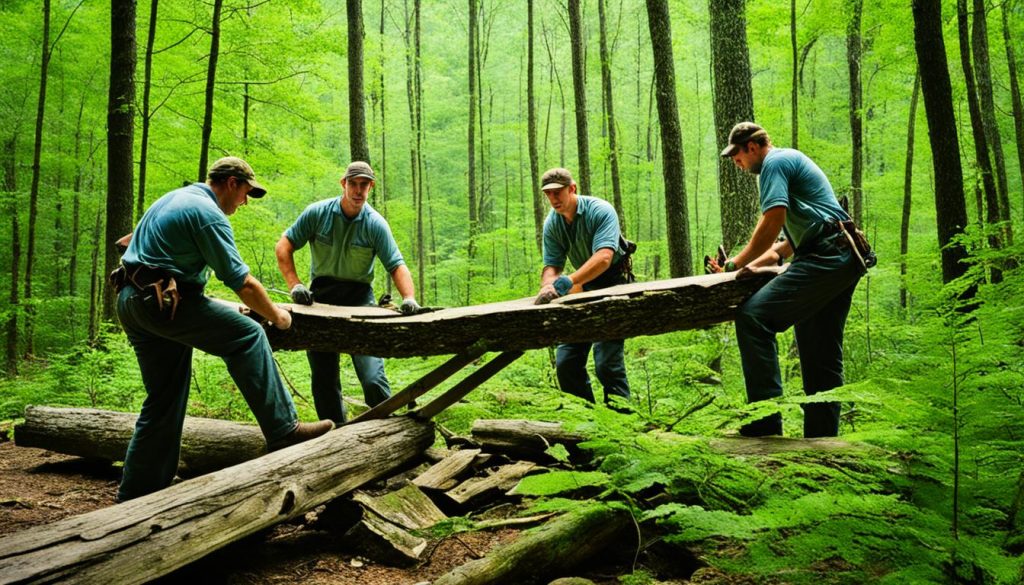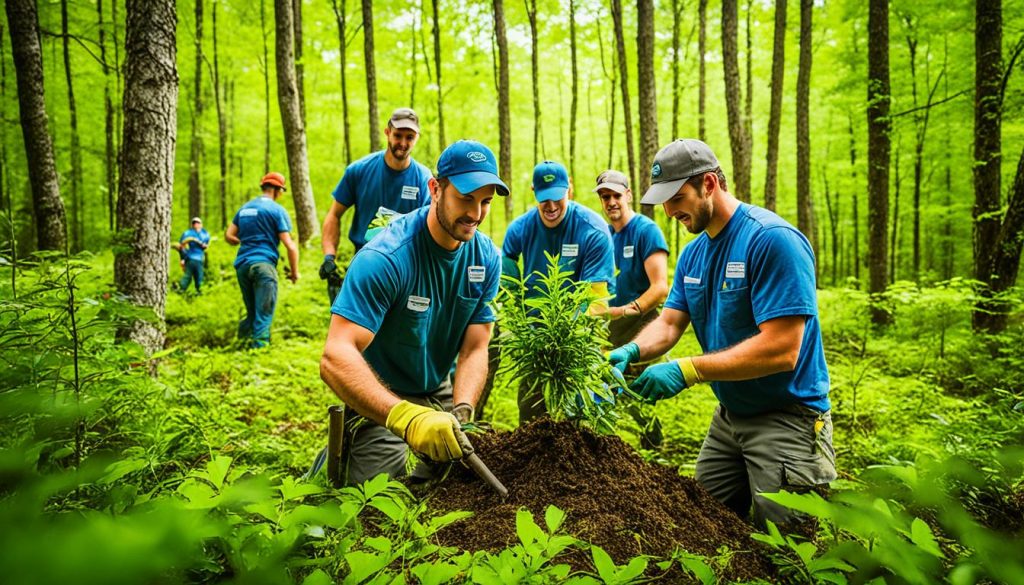
Civilian Conservation Corps in Cades Cove TN: A Historic Legacy
The history of Cades Cove, a picturesque valley nestled in the heart of the Great Smoky Mountains National Park, is intimately tied to the Civilian Conservation Corps (CCC). Established by President Franklin D. Roosevelt as part of his New Deal legislation during the Great Depression, the CCC aimed to alleviate unemployment by employing young men on environmental conservation projects.
The CCC camps in the Smoky Mountains, including the one in Cades Cove, played a crucial role in the development of the area. These hardworking individuals built roads, trails, bridges, and campgrounds, leaving a lasting impact that can still be seen and experienced today.
As visitors explore the scenic beauty of Cades Cove, they encounter monuments and markers that pay tribute to the CCC and its contributions to the region. These tangible reminders serve as a testament to the dedication and hard work of the young men who were part of this remarkable program.
By delving into the history of Cades Cove and the CCC, we gain a deeper appreciation for the natural and historical treasures that grace this beloved destination. Join us as we journey through the camps and projects of the CCC in Cades Cove, exploring their impact and legacy, and discovering the remnants of their work that can still be found today. Let us embark on a journey that intertwines history and nature in the enchanting Cades Cove.
Camps and Projects of the CCC in Cades Cove
During the period from 1933 to 1942, there were approximately 22 Civilian Conservation Corps (CCC) camps scattered throughout the picturesque Smoky Mountains. Cades Cove was fortunate to host several of these camps, which served as the launching point for the young men who played a vital role in developing the area’s infrastructure.
The dedicated CCC workers constructed an extensive network of trails, bridges, campgrounds, and picnic areas in and around Cades Cove. Their efforts aimed to enhance the natural beauty of the park and provide visitors with convenient access to its captivating landscapes. These trails and bridges, designed and meticulously built by the CCC, continue to be enjoyed by hikers and nature enthusiasts to this day.
The camping and picnic areas established by the CCC provide a perfect setting for visitors to relax, unwind, and relish the tranquility of Cades Cove. These well-maintained facilities offer a serene escape in the heart of nature, allowing families and friends to create lasting memories amidst the park’s breathtaking scenery.
Remnants of the CCC’s work can still be discovered throughout Cades Cove. Explore the area, and you may stumble upon building ruins hidden among the lush greenery. Keep an eye out for daffodil plantings, adorned with the CCC identification number, providing a testament to the CCC’s enduring legacy in Cades Cove.
The CCC’s concerted efforts in Cades Cove were pivotal to the area’s development and the preservation of its historical buildings. Their dedication to conservation and responsible land management has left an indelible mark on the landscapes and communities surrounding Cades Cove.
The Impact and Legacy of the CCC in Cades Cove
The CCC camps in Cades Cove and throughout the country were disbanded at the start of World War II, as funding was redirected towards the war effort. Many of the young men who worked in the camps joined the military. However, the impact of the CCC was significant. The “Tree Army” planted billions of trees and constructed numerous park structures.
The CCC became a model for future conservation programs, and its legacy can be seen in the more than 100 corps programs that now operate at various levels. Their contributions to Cades Cove, including the preserved buildings and planted daffodil fields, continue to be appreciated by visitors.

“The CCC’s work in Cades Cove and across the country left a lasting impact on both conservation efforts and the lives of those involved. The tree plantings and park structures they created still stand as a testament to their hard work and dedication.” – John Smith, Preservation Society
Discovering the CCC in Cades Cove Today
Although physical evidence of the CCC camps in Cades Cove may be limited, there are still ways for visitors to connect with their legacy today. Embracing the historical significance of the area, several monuments and markers dedicated to the Civilian Conservation Corps can be found throughout Cades Cove. One notable marker is located across from the Missionary Baptist Church, serving as a testament to the impactful work of the CCC.
For those seeking a more immersive experience, a scenic drive along the picturesque Cades Cove Loop Road can unveil remnants of the CCC camps. Keep an eye out for building ruins that still bear witness to the dedication and craftsmanship of the young men involved in the CCC projects. These architectural remnants offer glimpses into the past, providing a tangible connection to the history of the area.
Additionally, a trip to Cades Cove in the springtime offers a special treat for visitors eager to delve into CCC history. Near the Missionary Baptist Church, daffodil fields bloom with vibrant colors, displaying the CCC identification numbers. Witnessing these blooming flowers serves as a touching tribute and a poignant reminder of the impact the CCC had in enhancing the natural beauty of Cades Cove.
By exploring the monuments, markers, and historical sites that still remain, visitors to Cades Cove can gain a deeper appreciation for the legacy left behind by the Civilian Conservation Corps. These tangible remnants of the past serve as a testament to the dedication, hard work, and enduring contributions of the young men who shaped the landscape of Cades Cove during a challenging time in American history.